This essay was originally published in 2018 on Medium. For the first time, I’ve recorded an audio version which you can listen to above.
“No one is special, and everyone is needed.” — adrienne maree brown
I. ENTROPY
Black Rock City, August 2011. It’s just after midnight. The vast expanse of the playa is buzzing with lights and competing bass lines, a cacophonous constellation of a psychedelic cosmos. I’ve just completed my shift as a Guardian — tasked with offering graceful support to those wandering the hallowed halls of this mythic structure, The Temple. The walls are adorned with layers of grief and love.
It is a relatively quiet night. A few Burners wandering the halls, dust-caked and some occasional raucous interruption, until a brief interception and exchanging of words about the sanctity of this place. Most comply and proceed in hushed tones, others depart immediately for a party more to their preference.
I gather my things and step to the edge of the structure. The night chill has descended and the oppressive heat of the day feels like a distant rumour. “Tea, that would be nice,” I think to myself. I feel a light tap on my shoulder. I turn and am greeted by a man and woman, both wearing a set of dapper hats, peddling a cart wrapped in fairy lights.
“Tea?” the man offers, extending a piping hot thermos.
“Why, yes,” I respond. I unscrew the cap from my own bottle and he fills it jauntily. “Thank you,” I say as he finishes. They smile, tip their hats, and continue on their way.
I blow on the steam rising from my bottle. My stomach emits a rumble, and I remember its been hours since my last meal.
“Grilled cheese, sir?” I hear behind me. I turn and there’s a different man dressed like a server in a high-end restaurant, large handlebar mustache framing his face and napkin draped over his foreman, extending a silver platter. A pile of grilled cheese sandwiches drift their scent into my nostrils.
“Why yes, that would be perfect,” I say, retrieving a sandwich from the plate. He replaces the lid on the platter and disappears into the night.
Now, tea in one hand, warm grilled cheese in the other, I hear a loud boom in the distance. I turn and witness an enormous Trojan Horse become engulfed in a mushroom cloud of fire and ash.
“Wow.” I marvel, and take a bite of the sandwich.
II. RESISTANCE
Summer, 2012 — Cambie Street bridge, Vancouver. The Casseroles movement, ignited by the Quebec Student Strike (so named for their tactic of banging pots and pans) has spilled into cities across Canada and around the world.
I gather with others at Vancouver City Hall, quietly at first, until the attendees begin to clang. I recognize many faces — some from the previous Occupy encampments, others from a spectrum of rallies. One wears the iconic Guy Fawkes mask, the sly grin a symbol of global resistance. Others carry fresh sandwiches and sliced fruit. A large banner reads “Stop the War on Education” while another “Vancouver in Revolt.”
We march on to City Hall. There was a rumour that council was in session. The mass of 50–60 citizens clang their way into the lobby. The security guard stands aside but looks nervous. You can see the plea “Please don’t break anything” in his eyes. The din is soon deafening. Police begin to assemble outside the entrance.
A black-masked protestor, only one of two, grabs the plastic “wet floor” sign and slams it repeatedly on the lobby desk. Now the security guard engages to wrestle it away from him. The protestor lets go, but sneers defiantly. Another security guard calls toward the police to enter. The rest of the Casseroles marchers continue their cacophony, but there’s a sense of uneasiness. One of them directs the group to continue the march.
Outside, the marchers grow. Behind me, harsh words are exchanged and a scuffle erupts at the City Hall steps. The police try to close the front doors, while a few marchers pry them open. It’s a tug of war. Tensions run high. From my angle, it looks like a policeman strikes the angriest protestor in the shoulder. Others scream out in shock. The man who was hit, baggy jeans, scarf around his neck, becomes Anger.
The shoving continues until a woman pulls Anger away and screams at him “WE ARE WRONG. WE ARE WRONG. THIS HELPS NOTHING!”
Anger backs off, the litany of outrage by fellow protestors continues. Guy Fawkes yells in his face “THIS IS A NON-VIOLENT PROTEST. WHAT THE FUCK ARE YOU DOING.”
Anger screams back “YOU THINK NON-VIOLENCE WORKS? FUCK YOU. YOU HAVE NOT LIVED MY LIFE. FUCK YOU.”
Anger storms away. The crowd attempts to re-establish harmony with their pots and pans. No one is sure quite what to do. Someone yells “MIC CHECK.” Still unsure. “MIC CHECK” is called again.
Suddenly, I see Anger come running back, a large rock in his hands. He heads for the doors of City Hall. Many of us scream “STOP IT! NO!” And at the last moment, Anger drops the rock. Others crowd around to talk him down. There are calls to move on, continue the march.
The group, now hovering around 50, tentatively crosses the road. Someone yells “MIC CHECK!” one more time and we listen.
We traverse a few more city blocks, the police riding ahead of us to block traffic before we get there. There’s talk of heading toward Cambie St. bridge, to join with another pod of Casserole marchers who began at the Art Gallery downtown.
We head north. In the distance, Yaletown is an impenetrable wall of glassy towers in the fading blue light. Once the other group enters the bridge, the police close in behind them and block off the bridge from both ends.
The ambience of the city recedes into the background. The pots and pans become the only sound. A woman dressed as a clown dances along the middle barricade. I take her photo.
The city slips further away and our two groups meet. We cheer together. We have taken the bridge.
The voices die down and suddenly I feel like we are alone at the edge of the world. I think: this is where reality breaks down. This is where we poke a hole in the seamlessness of our society, and realize… there’s nothing there. We are staring into the abyss.
As I look around at the urban opulence, this glittering proclamation of modernity, I suddenly feel exposed as we are: fragile storytellers in a universe much bigger than all of us.
“When electrons or atoms or individuals or societies interact with one another or their environment, the collective behavior of the whole is different from that of its parts. We call this resulting behavior emergent. Emergence thus refers to collective phenomena or behaviors in complex adaptive systems that are not present in their individual parts.”
— Emergence, A Unifiying Theme for the 21st Century
III. COMPLEXITY
TedX Vancouver, 2012. I’m standing in the cafeteria line at lunch break, the morning of talks has become a murmuration among the hundreds of attendees. The instructions encouraged by the organizers is to deliberately speak to your neighbours — break the ice, integrate, find out what is alive in them.
The woman in front of me, well-dressed and sporting thick glasses, looks fairly approachable. “That was quite a morning,” I say. She agrees and we roll easily into conversation.
I soon discover her vocation is the study of complex systems. I bring up the phenomenon of emergence — a theme I had been exploring while working on the film Occupy Love and its implications for activism and social change. In once scene, we use footage of a starling murmuration to illustrate an example from nature.
She’s immediately excited, clearly a subject she is also passionate about. She labels this as “flocking” and reveals there are only 3 simple rules which give rise to the phenomena:
1. Separation — avoid crowding neighbours (short range repulsion)
2. Alignment — steer towards average heading of neighbours
3. Cohesion — steer towards average position of neighbours (long range attraction)
From this, the starlings (and other species) can express complex behaviour that does not require a “leader” to govern the individual decision making processes of each bird.
As we finish our conversation and are ushered into lunch and the afternoon round of talks, I’m left wondering if there might exist a set of “principles” that would give rise to a new emergence of activism, capable of responding to our growing planetary crises — and where current structures of society seem woefully inadequate.
IV. DISTRUPTION
Findhorn, Scotland, Oct 2014. A diverse range of speakers and activists gather for The New Story Summit, intent on identifying and accelerating the shift away from planetary disaster and towards a more beautiful world. I am invited to join the film team to cover the event.
Hopes are high that something of true merit will emerge — though scarcely a few days in and frustration begins to mount. Everyone knows how to do the thing they’ve already done — offer a particular “talk” or ceremony or circle, and yet, no one knows how to approach what they haven’t done before.
On the morning of the fourth day, attendees arrive in the grand gathering hall only to discover that the conference schedule, meticulously planned the day before, has been rearranged. The post-it notes of the previously organized workshop offerings now spell the words WE DON’T KNOW.
Bedlam ensues. Some are outraged by the disrespect. Others (like me) are grateful for presence of The Trickster. Now perhaps, something truly new could be born.
Ultimately, the conference reconstituted more or less along the familiar, and closed with some sense of appreciation by the participants, not quite cresting that feeling that something magnificent could have been attained.
Author and conference co-organizer Charles Eisenstein reveals weeks later that he was part of the clandestine crew that staged the insurrection. In his essay “We Don’t Know” he writes about his decision to disrupt:
“The ingredients for both a descent into chaos, and emergence into a new kind of order, were all there. The gathering did not take this path, and the reasons why are illuminating. There were fundamentally two: the organizers were not willing to let go, and the participants were not willing to let go either. What the conference revealed to me […] is that our civilization has not quite yet reached the point of readiness for a new story.”
Reflecting upon the time myself, I was left with the image of Indiana Jones and “the leap of faith” that appears in the film The Last Crusade. It’s the moment he reaches the abyss without a bridge to cross. His only instruction is to trust the bridge will appear.
When he gathers the courage to step off the ledge, he is caught — and realizes the abyss is an optical illusion. The bridge was there all along. He races across the chasm and continues his quest, but not before grabbing a handful of sand and spreading it back across the bridge for others to follow behind him.
Somehow I feel this is was the actual gift of The New Story Summit: to reveal the invisible sub-structure of conditioning that shows just how close we came to surrendering to the emergent possible.
Understanding emergent behavior requires a focus on the emergent collective properties that characterize the system as a whole and a search for their origin. It means identifying emergent collective patterns and regularities through experiment or observation, and then devising models that embody candidate collective organizing concepts and principles that might explain them.
These patterns, principles, and models are the gateways to emergent behavior observed in the system under study. Only through studying these gateways can we hope to grasp emergent behaviors on a grand, unifying scale.
— Emergence, A Unifiying Theme for the 21st Century
V. CONTACT
Summer 2017. Contact Improv Dance Jam. I’m standing in a sunbathed studio for my first jam with a handful of others. Previously, I’d only encountered the practice through having earnest hippies bump into me on a dance floor — for which I’d judged them out of hand. Eventually, my curiosity got the better of me and I decided to explore the practice for myself.
Now, the instructor, a lithe and passionate man from Quebec, opens the day by explaining the fundamentals of the practice.
“Contact is about exploring the space between you and another. There is no right or wrong way. There is no one who leads — only a shared surrender to what wants to emerge.”
Soon we begin the practice, and I feel awkward. The open jam reminds me of a high school dance, hoping someone will pick me, or that I gather the courage to ask another to dance. I’m soon paired with a man — I recognize him from the community and he enters the space with ease. He’s clearly done this before.
We find a single point of contact standing shoulder to shoulder, and begin from there, moving and weaving, slowly at first, then faster.
It’s surprisingly intimate, and I soon find all the places in which I’m defended against surrendering to the movement. It’s also exhausting, and my skin is soon glistening with sweat.
When I try to “think” about where to go next, I become less fluid. I feel like I’m trying to catch up to what’s next. When I release the thoughts and trust my body, trust in the contact, which mysteriously, seems to hover in the interstices — the space between myself, my partner, and the earth — somehow, I release into a palpable flow.
A phrase comes to me, I don’t know from where: “Contact is always true.”
I feel connected to a greater power that seems vaster than anything human, as great and familiar as the ocean, yet impossible to grasp in its entirely.
My parter and I reach a natural point of stillness, both of us panting, smiling, and we break off the dance.

VI. CHAOS
Spring 2018. The rise of Jordan Peterson. I’d heard the name numerous times before, vaguely connected to some controversy at the University of Toronto around his refusal to use certain mandated gender pronouns. Then suddenly, he seems everywhere. Cropping up in the news, podcasts, talk shows, and my social feed — on each occasion triggering a cascade of praise or condemnation, with friends of varying political allegiances taking clear sides.
Some call him a deplorable bigot who deserves as little attention as possible. Others hold him as the new saviour of young men and champion of Western civilization.
I realize I need to research the “JP” phenomenon for myself.
I listen to some of the most popular podcasts. I watch many of his Youtube videos. I study some of his extensive lectures on Maps of Meaning. I read exhaustive commentary from many other writers.
I don’t pretend to arrive at a comprehensive understanding of the depth and scope of Peterson’s work — which going by volume alone is impressive. What I soon find more compelling is tracking the cult following which has gathered around him, and an overall frame of his worldview.
It’s clear Peterson is fond of myths and archetypes. Like St. George battling the many headed Hydra, he is compelled to speak out for the sanctity of the Individual and against the rising thread of ideology in any of its forms.
Nature is Chaos, Peterson says. It is constantly trying to kill you. Culture (and Society) is only thing keeping the bloodthirsty maw at bay. The Individual is the Hero, and must slay the dragon of your lower nature and serve Order, lest we succumb to anarchy.
The lines of Yeat’s poem, The Second Coming, swim toward me from the deep:
Turning and turning in the widening gyre
The falcon cannot hear the falconer;
Things fall apart; the centre cannot hold;
Mere anarchy is loosed upon the world.
Many have observed that the Western order is breaking down. In it’s place, what will rise to replace it?
I can hear Peterson’s fear behind his well-articulated certainty. If not Order, then Chaos. It seems like a clear and irrefutable formula: against the tide of uncertainty, one must exert further domination and control.
“A reaction always produces a twin, not a true alternative.” — Stephen Jenksinson
I’m left with the questions: is the nature of chaos inevitably lead to breakdown, anarchy, and war? Or is there another type, one that leads to dissolution, mystery, and emergence?
And if the latter, how might we serve the conditions for consciously engaging with emergence?
VII. TRANSPARENCY
Phoenix, Arizona. Oct 2017. The Awakened Woman Convergence. It’s day two of three and the mid-morning heat is already sweltering. The night was restless for many. I’ve noticed a growing tension that nobody can put their finger on. We’re gathered at a swanky private home, with a cascading swimming pool and sweeping archways, high ceilings, and plush furniture.
The event was instigated by my friend and visionary, Phoenix Muranetz, who felt the divine instruction to support the “rise of the feminine” on a broader scale. After a small but successful event in Bali the previous year, she called for a bigger and better event in the desert.
From the moment I arrived, I felt something was not quite right. Amidst the variety of workshops, keynotes talks, and break-out groups, behind the gowns and sparkling smiles, was a deeper disquiet. The participants and speakers, around 200 in number, were gathered to support each other and connect, though something was holding everyone back from dropping in.
For starters, this gathering had the familiar trappings of the typical “you deserve to get rich” events, that paper the landscape under the veneer of serving true revolution. Manifest Abundance. Total Transformation. It was clear to me that this ongoing focus on the Separate Self continued to serve a core frequency of fear. “There is not enough to go around,” it whispers. “Get yours any way you can.”
At the same time, I’m here to premiere my new documentary Amplify Her, and perhaps not rock the boat. So I stay quiet and pledge to support where I’m needed. But last night, the cracks had started to appear.
A group of mysteriously witchy women who had driven a bus down from Victoria, BC, (I dubbed them “The Coven”) had sensed the misalignment as well. By that morning, one of them had received the inspiration for a poem, and they took it upon themselves to disrupt the morning schedule.
The entire conference is called to the main stage. Once the group, numbering close to 100, is assembled, one of the women, Sainte Grace, takes the stage. After a brief introduction, she brings her poetry:
“Courage My Love
To Be Love
To Be Truth
Courage My Love
To Be The Divine
Golden
You”
As she spills her words onto the crowd, the other women of the Coven begin to move, slowly at first, accompanied by another woman adding her singing bowl. Their voices gather into a crescendo, rising in volume and intensity. As the poem stops, time ceases to flow and the audience leans in expectantly.
Seated in the crowd, I’m buzzing with anticipation. This is it. I think. This is the feminine finally awakening, bursting through the facade of the old story. And now, something wild and spectacular will happen.
Sainte Grace hands the microphone over to Phoenix, who graciously receives it with a smile. It’s her moment to step into the empty space, that abyss of not knowing, the womb of the un-manifest. She pauses, gazing out at the crowd. No one takes a breath. And then…
“Thank you,” she says. “Now I’d like to introduce our next speaker…” And she continues with the regularly scheduled programming.
I’m in disbelief. This is not what’s supposed to happen.
The next speaker, a tall man well-known in the community for his work with men, takes the stage and begins his presentation. The rest of the audience appears unfazed. I’m agitated and cannot continue sitting. I slip away from the crowd, wondering what to do next.
The moment is eerily familiar to me. I recall Charles Eisenstein’s closing words from his essay on The New Story Summit, four years earlier:
Digesting the experience of the New Story Summit, the next step at least will come into focus. Its revelation of the limitations of the Conference archetype — in particular the disconnect between new-story content and old-story structures — will surely feed in to the planning of future conferences, which will stand on its shoulders.
What is exciting to me is the possibility that the NSS marks a transition into a different kind of gathering entirely, no longer a conference, but perhaps more like a festival or a retreat, or something that is all and none of these things, something new, something edgy, something experimental, something destined to succeed and to fail, and thereby to illuminate the next step beyond. What else can we hope for, as we explore this mapless place between stories?
I know what to do.
At the lunch break, I attempt to find Phoenix and share my revelation. She’s missing from the crowds, and I pace the halls until I find her in her private room with the rest of her core team. She’s distraught, tears staining her cheeks. The rest of her team is grave.
She shares her disappoint about not seizing the moment that had just passed. Yet it was too much to pressure to bear. In the midst of logistical challenges and rising debt, Phoenix had been collapsing under the weight of running the conference in the old model leadership — based on the masculine ideals of strength and purpose. Just keep going. Try harder. Don’t let them see you sweat.
“I know what wants to happen.” I announce.
I share my experience at The New Story Summit and the need to return to the emergent precipice. I propose guiding the group to that moment again, before turning it over to Phoenix, whereby she will offer radical transparency about what’s been going on behind the scenes. From there, we’ll trust what comes.
There is an immediate shift in the group — nervousness and excitement. One of the men dashes off to retrieve one of the conference program posters and uses a black marker to draw a thick spiral across it all, adding the words “WE DON’T KNOW.”
“Nice one,” I say, giving him a nod.
With Phoenix now buoyed by our plan, the core group huddles tight for a moment of contact, before dispersing into the crowds to spread the word. In 15 minutes we’re meeting together in the main tent. Tell your friends.
Soon the attendees have gathered in one large circle, some still with their plates half full of food. No doubt there’s some annoyed by the second disruption of the day — though many seem willing to follow us down the rabbit hole.
I take the microphone.
“Thank you all for coming back. Now let me tell you a story…”
For the second time, I share what happened at The New Story Summit. I speak of the challenge of stepping into the unknown, that “space between stories.” And I ask them to release their roles of organizer/attendee/speaker and become active conspirators in what may yet unfold.
I hand the microphone over to Phoenix, who appears tense but resolute.
No one takes a breath.
The only word to describe what followed is to call it ‘holy.’
What emerged was a deep well of grief that is the unspoken fundament that underlies so much of our time — certainly when we gather together and purport to be any sort of “community.” What is so often banished had returned: tears, anger, sorrow, transparency, trust.
When the circle completes, Chief Phil Lane Jr., the formidable indigenous elder who had until then been silently observing, leaps to his feet with an eagle feather and splashes sacred waters on the delighted faces of the participants. He announces “The old Awakened Woman Convergence has ended, and the new Convergence has begun!”
Deya Dova, the headlining act for the concert that evening, sensing her emergent cue, stands up and spontaneously begins a chant. Others leap to their feet and join their voices. The grief has become radiant joy — building to utter, ecstatic jubilation.
For a moment, no one is “in charge.” We all play our part. We all ride the wave of emergence.
When the wave had crested and the conference began to resemble itself, I stood with a friend Pulxaneeks, an indigenous woman whom I hadn’t seen amongst the larger crowd. Turns out she had been with the elders who had just arrived from their travels.
“Did you happen to see any of what just happened?” I ask her, curious if she recognized it was as powerful as I want to believe. “I’m not quite sure how to describe it… it felt like… almost like…”
“Yes, I saw it,” she looks at me and smiles. “It’s no longer a conference. Now it’s a village.”
VIII. COHERENCE
Australia. Feb 2018. The small seaside restaurant is quiet after the dinner rush has mostly cleared. I’m sitting across from a man who has been my host this evening, his silver hair pulled back in a pony-tail, a successful businessman and non-dual spiritual practitioner who is deeply committed to global system change.
During our recent encounter, he felt strongly that the universe wished for us to meet. I’ve been impressed by his own life experience and generosity — and the conversation flows as easefully as the wine.
We arrive at the subject of ‘emergence’ one that he is very familiar, having organized multiple gatherings since 2012 exploring the theme. I ask him about the relationship between ‘action’ and ‘listening’ for what wants to happen in the emergent moment.
“No, it’s not about listening,” he shakes his head. “When you are in emergence there is no choice.”
“Look, would anyone say to the sun, ‘thank you for choosing to shine.’ Of course not. It just shines, because that is its nature. In the same way, if we can wake up to our true nature, we just do what is needed.”
I ponder his words and the conversation shifts to other topics.
When the dishes of the finest vegetarian/Italian I’d ever eaten finally slow there pace, there is a pause in our conversation. The man suddenly penetrates me with his eyes, as if a higher being is reaching through and gripping the innermost axis of my soul.
Time appears to bend, and we enter the space of all-time. The world fades. We are in the ever-present silence of Now.
“Don’t miss it.” He warns.
My mind immediately wants to inquire as to the “it” of which he speaks. And yet, a place in me somehow recognizes the trueness of the words.
He repeats it again.
“Okay.” I say, with a solemn weight I understand as a vow.
The world returns and the seriousness of the moment evaporates. “I don’t know why,” he says, “but the universe chose me to tell you that.”
He picks up his fork and tucks into the last bites on this plate.
IX. EMERGENCE
Oct 2018. Victoria, Canada. After 35 hours of labour, time ceases to have meaning.
What began as a home birth the previous day had become a saga of epic proportions — including a helicopter ride at dawn from our small island to the larger city hospital. Thankfully, the situation is stable and both mother and baby are healthy — though my partner is utterly exhausted.
We are surrounded by our birth team: the doula, our house mate, two midwives, and the wider medical cohort hovering out just of sight…in case.
In the last few hours, I have been broken open many times over. To see my beloved in the throes of what appears equal parts agony and ecstasy, engaged in the work of bringing our first child into the world — it’s too much for my stoicism to bear.
My tears come unbidden, again and again.
She is here in the dimly lit hospital room, and somehow far far away. I don’t pretend to know what it’s like for her on the inside. In between the waves of labour, she falls silent and her breaths come steady. I stroke her cheek that glistens with sweat.
I recall that morning:
Once the decision had been made to leave our home, and I head to the bedroom to pack an overnight bag. I glimpse the Osho Zen tarot deck on our altar and feel the impulse to pull a card. I take a breath and reach over.
“Letting Go” is revealed.
I laugh, or sob, I can’t tell which.
Perfect. I think.
Now, back in the hospital room, my partner stirs. Another wave is rolling in from a distant shore. Her moans grow and she sits up. The rest of our people mobilize. There was never any turning back, but the momentum is beginning to intensify.
Don’t miss it.
She calls me to her side, I hold her face in my hands.
“I am in awe of you,” I tell her, tears welling once again. “You are the most powerful woman I’ve ever known.”
She breathes through the pain.
“I’m going to bring our baby home,“ she whispers.
Two hours later and an impossibly tiny being stares up at me with wondrous eyes.
His mother is laying on the hospital bed, being tended quietly by the nurses. She’s gazing at us with a soft face, a smile on her lips.
It’s pitch black outside.
And I recognize life has become instantly more clear, and infinitely more mysterious, than I’ll ever understand.
— IM
Additional reading:
Emergent Strategy by adrienne marie brown
Emergence — A unifying theme for the 21st Century by David Pines




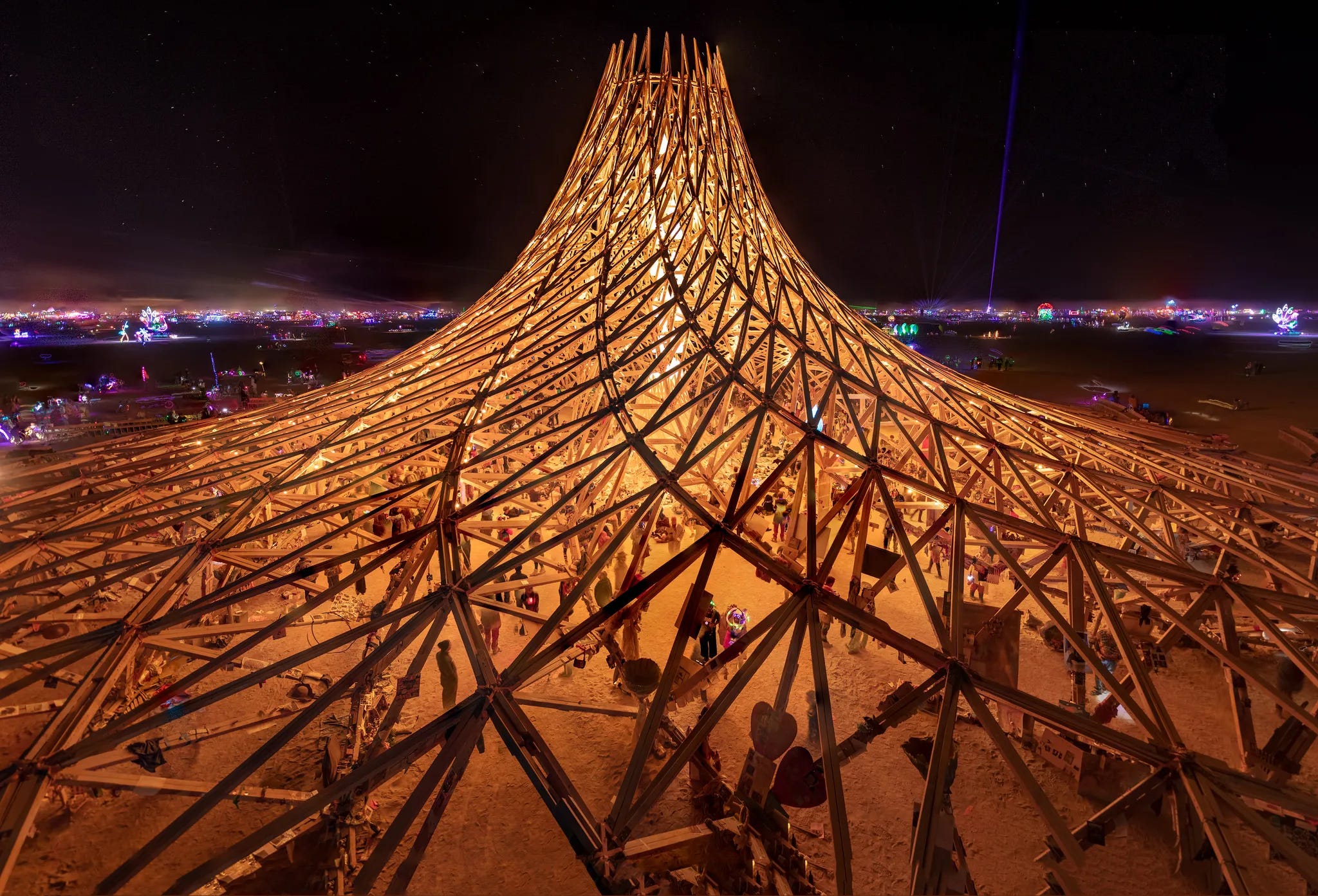
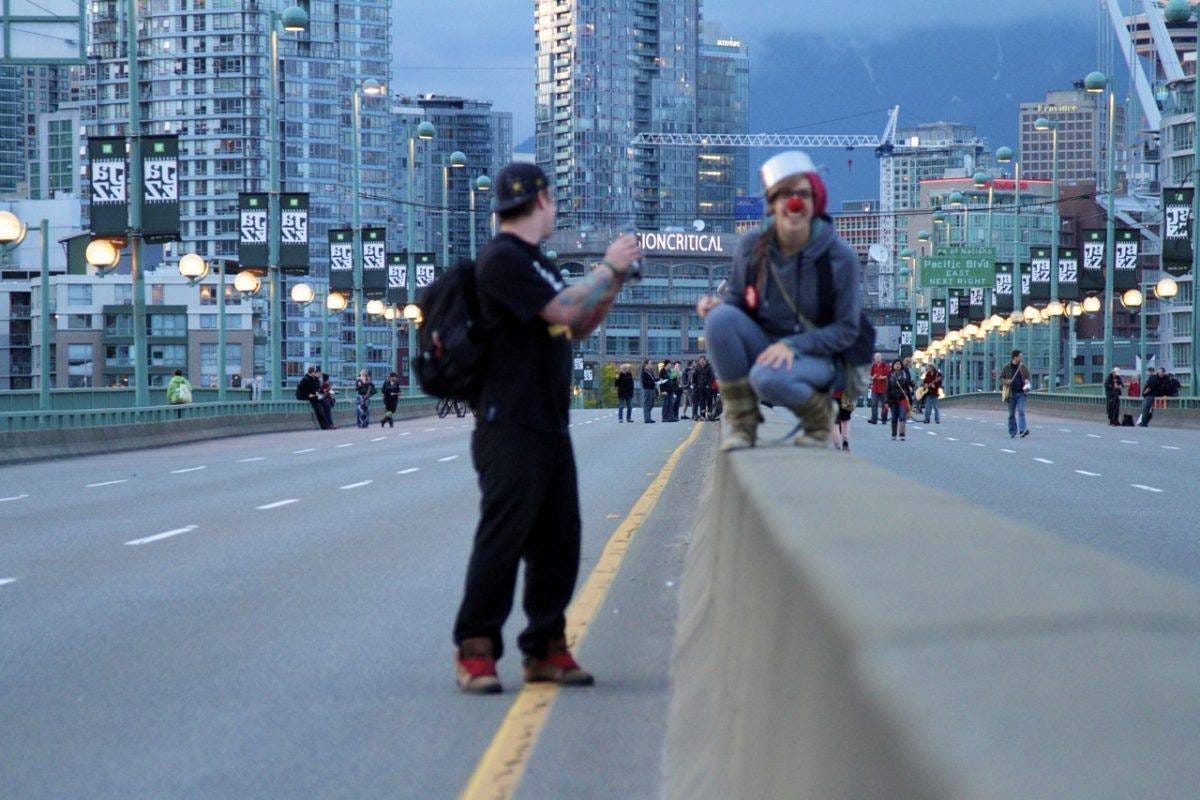
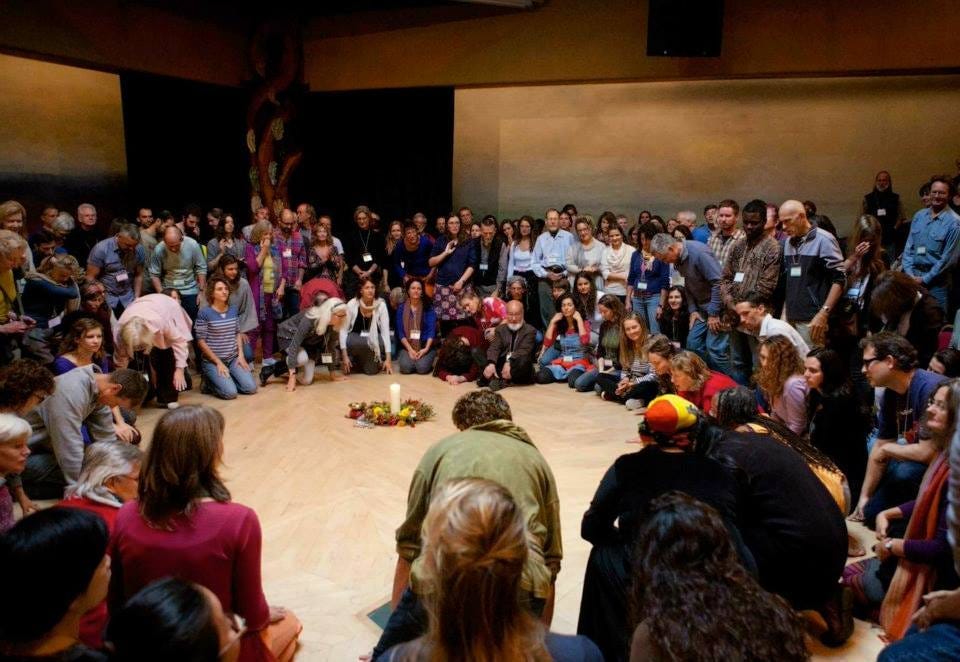
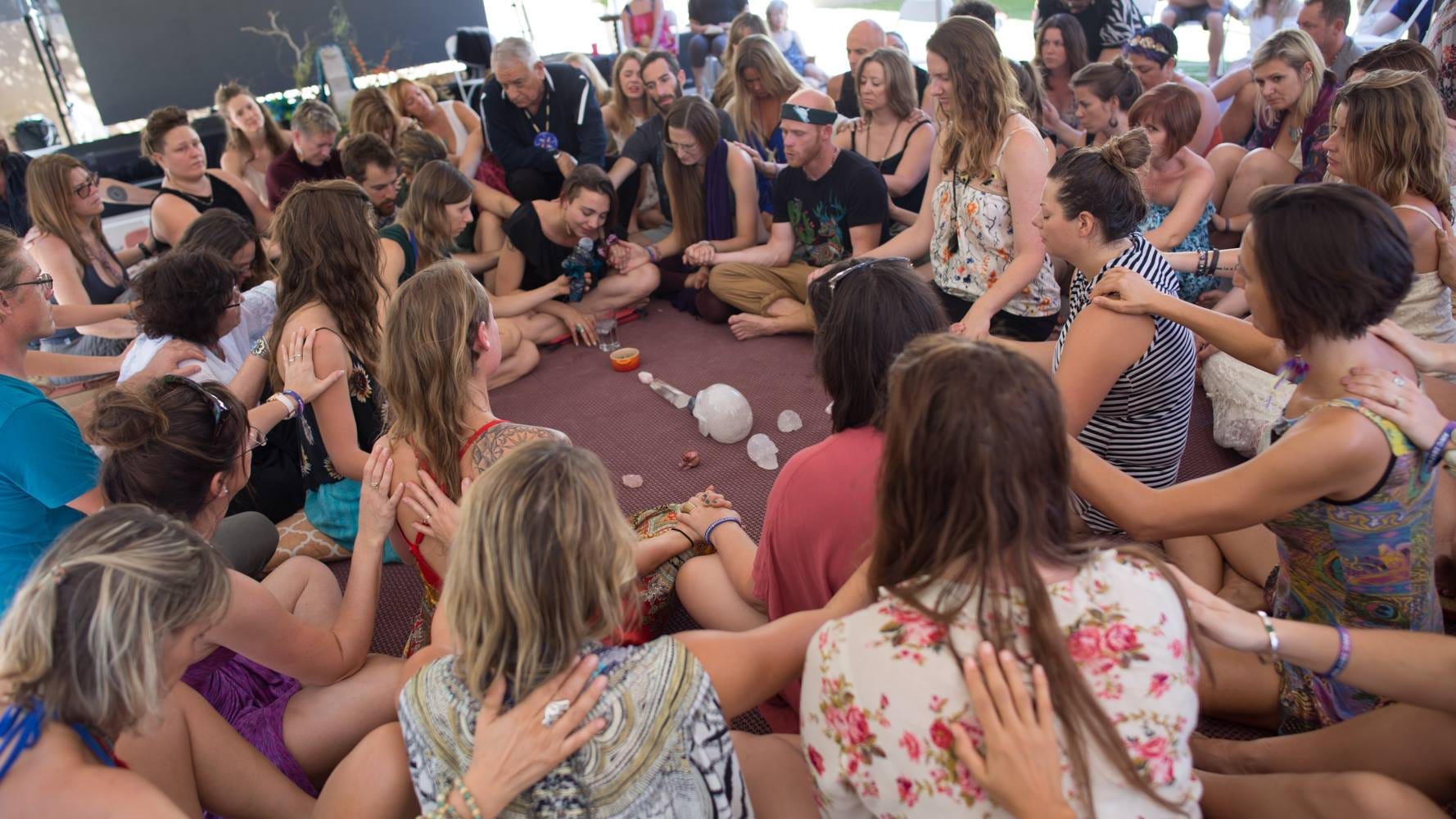
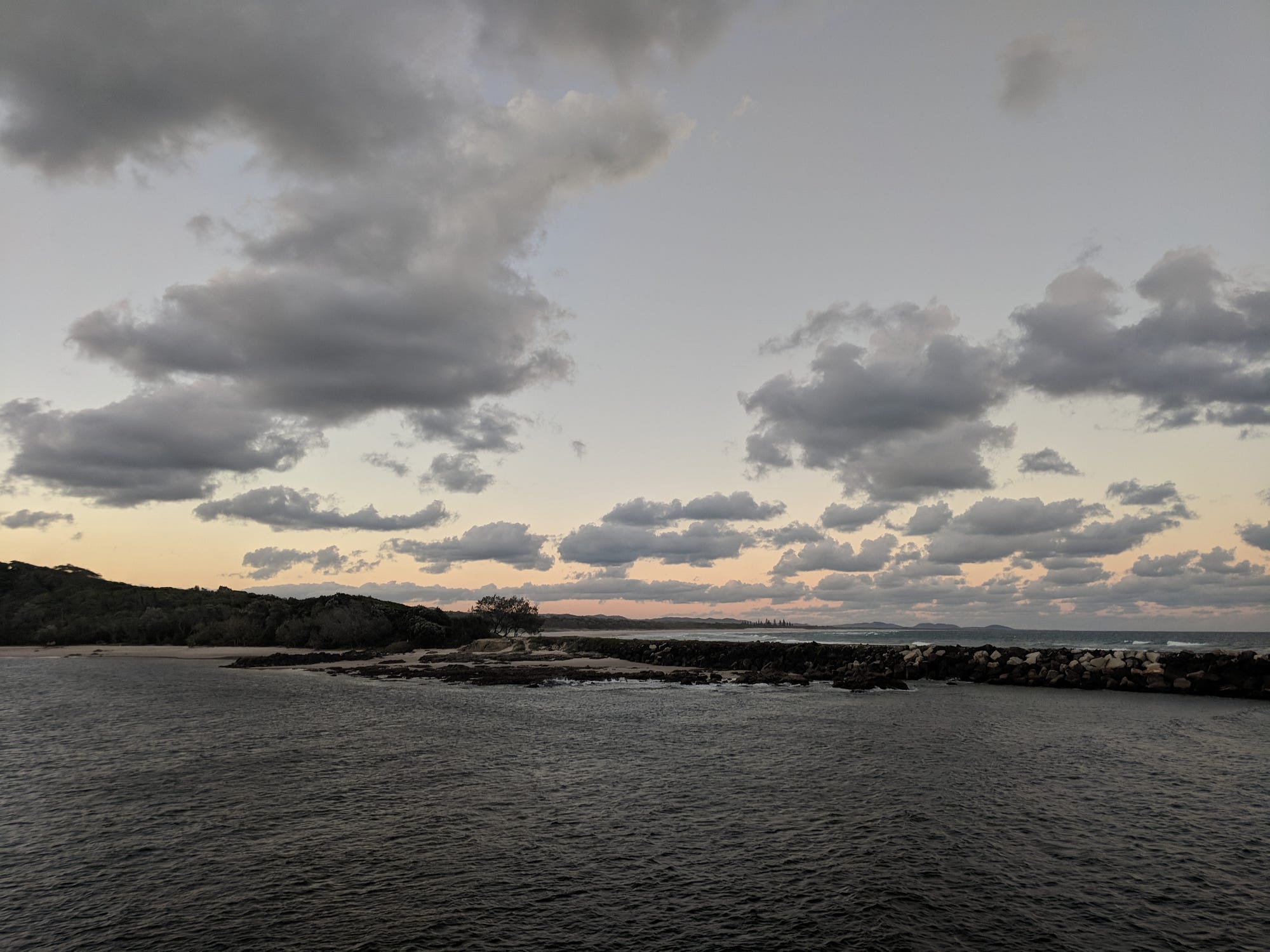
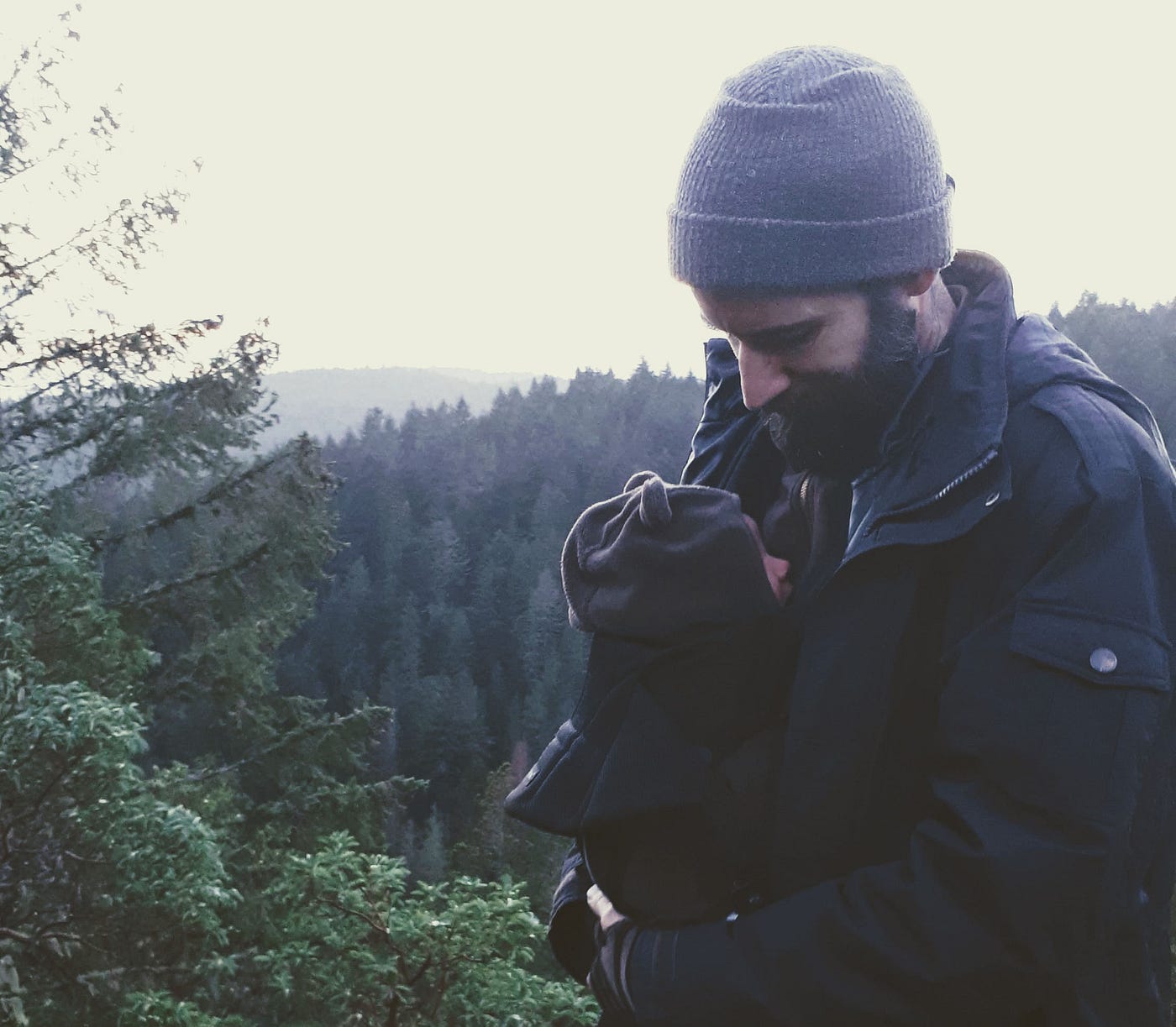


Share this post